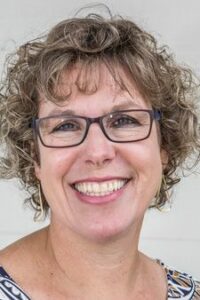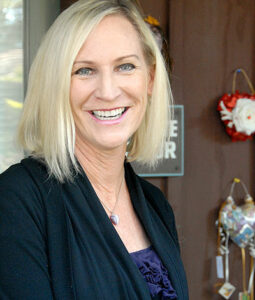“The new five-year strategic plan is to stay afloat through 2020,” a local nonprofit leader was recently overheard saying. Many nonprofits agree with him.
According to the American Alliance of Museums, more than half of all museums have less than six months of operating cash on hand. Many others in the social sector are in the same boat. Boards, nonprofit leaders, and funders are paying closer attention to sustainability during these challenging times.
But what are we looking for when we assess an organization’s level of sustainability? Nonprofit Quarterly says there are two main components to sustainability: financial and programmatic. They define sustainability this way: “Sustainability encompasses both financial sustainability (the ability to generate resources to meet the needs of the present without compromising the future) and programmatic sustainability (the ability to develop, mature, and cycle out programs to be responsive to constituencies over time).”
For most nonprofits, financial sustainability is closely linked to programmatic sustainability. Assessing the financial side tells only half of the story. Therefore, leaders must consider both aspects when evaluating their organization’s sustainability.
COVID challenges add an extra layer of complexity to measuring sustainability.
SmartBrief explains, “The COVID-19 pandemic has created an environment of hyper-uncertainty for social sector organizations, as the economic crisis has weakened nonprofits at the very time when demand for their services is skyrocketing. Many nonprofits have emerged from the initial stage of crisis response but are still struggling to identify what they should do next.”
Foundations and other nonprofit analysts talk about the importance of maintaining resilience and achieving sustainability. Beth Kanter who writes a popular nonprofit blog, says, “Resilience is defined by most as the ability to recover from setbacks, adapt well to change, and keep going in the face of adversity.” In the nonprofit sector, resiliency is framed as both a leadership skill for nonprofit professionals as well as organizational capacity. A higher level of resilience and organizational capacity are key components of solid sustainability.
The Council of Nonprofits says that the term sustainability “is commonly used to describe a nonprofit that is able to sustain itself over the long term, perpetuating its ability to fulfill its mission. Sustainability in the nonprofit context includes the concepts of financial sustainability, as well as leadership succession planning, adaptability, and strategic planning.”
Our local nonprofits discuss their views of sustainability.
I asked a few of our local nonprofits to tell me how they define sustainability. Here is what they said.

Alana Walczak, CEO CALM
Alana Walczak, Executive Director of CALM:
“Sustainability is keeping staff and organizational operations whole, with a mindset of abundance, rather than scarcity. It’s the ability to breathe, to plan for the future, and to have the space and time to think about what is needed. It’s not just about meeting the minimums, but having the capacity to be agile and adaptive, especially when our sector anticipates a deluge of increased need.”
When I asked her what she thought foundations and other funder should focus on, she said, “Lasting change occurs when foundations and funders work with non-profits as true and equal partners, when they ask meaningful questions and really listen to our answers. This is a time to deepen our partnerships, to think together, and to perhaps pivot from traditional programs in order to anticipate the needs of the future.”
Next, I asked her what would help CALM become more sustainable. She responded, “CALM believes that sustainability is cultivated through engaged community relationships – with partner agencies, supporters, funders and the community as a whole. We rely on continued investment from all parts of our community to sustain our efforts to support the health and well-being of our families.”

Greg Gorga, E.D. SB Maritime Museum
Greg Gorga, Executive Director of Santa Barbara Maritime Museum
“Sustainability is having cash on-hand for one year in operating funds plus an endowment that provides enough annual interest to cover 20 percent of your annual budget provides sustainability.”
When I asked if he thinks foundations and other funders should focus on something other than sustainability, he responded, “No. Maintaining operations, keeping staff employed, the doors open, and some type of programming, is about all you can ask for right now.”
He said his organization could become more sustainable with “(increased) general operating funds and building our Endowment Fund. That is our current goal.”

Lori Goodman, E.D. IVYP
Lori Goodman, Executive Director of Isla Vista Youth Projects
“Sustainability for IVYP is the confidence that we can continue to serve our clients and exist as an organization into the future.” She says funders should focus on “equity and social change.”
When I asked her what would help make IVYP more sustainable, she responded, “Publicly funded health care. Health care costs are unpredictable. Most of our workers already make low wages. If I want to raise their wages, I have two problems: 1. Will I be able to maintain the increase? 2. If they currently qualify for Medi-Cal and I raise their wages, they may lose health care for their children. Increasing our health coverage is a priority, but the cost of health care is such that I can’t predict the costs from year to year. If we had universal health care that was not tied to employment, I could manage the costs better.”
Nonprofit leaders are busier than ever and constantly learning new skills to meet the challenges.
I asked some of our local nonprofit leaders about their busyness level and also what new skills they are learning. Here is what they said.

Heidi Holly, Executive Director Friendship Center
Heidi Holly, Executive Director of Friendship Center Adult Day Services
“Our busyness level is over the moon! Having to re-invent our services and programs due to COVID vulnerable population with health conditions has certainly been a challenge. My whole team is learning new technological skills including Zoom, Go-to-Meeting, Constant webinars, Cares Act SBA/PPP loan information, developing new platforms for a new business plan, and all the PPE information that is needed to retain staff and keep them safe. The learning curve is dramatic.
“When we open for onsite services, we will continue with virtual programming for our constituents and community. It has proven to be very popular. Perhaps this is a silver lining?”
Lori Goodman, Executive Director of IVYP
“My days are full. I have a generalized sense of anxiety that things are not getting done. And, in some ways, I have more time than I did before, because I’m not driving to meetings all over the place.”
Alana Walczak, Executive Director of CALM
“A strategic plan has never predicted what those of us in the nonprofit sector are managing right now! We are literally saving lives every single day. All while supporting staff, pivoting services, and maintaining financial strength and stability. I personally feel less busy, but significantly more tired – physically and emotionally. The enormous professional responsibility – combined with remote school and continued social isolation – are taking a toll.”
When I asked her what new skills she is learning, she said, “I’m learning to live in the moment, and to lead with intentionality, empathy and grace. I’m reminded of the importance of quality relationships, and the dangers of rigid expectations. I am acknowledging my feelings, prioritizing authenticity and transparency, and simply saying it like it is.”
I asked her how these new skills will serve her organization in the future. She responded, “This is an opportunity for deepening – deepening our sense of self-awareness, our understanding of our agencies, and our relationships with colleagues, donors, and our community. If there ever was a time to BE the leader we are waiting for, the time is now.”
Nonprofits need our support now more than ever before.
The critical role nonprofits play in our community is more apparent than ever. I reiterate the comment from SmartBrief at the beginning of this article: “The economic crisis has weakened nonprofits at the very time when demand for their services is skyrocketing. Many nonprofits have emerged from the initial stage of crisis response but are still struggling to identify what they should do next.”
Please consider making a financial contribution to those nonprofits that address issues you value. Their life may depend on your help. Look for ways to offer your time and talent, as well. You will be an important encouragement to them during this crisis.
